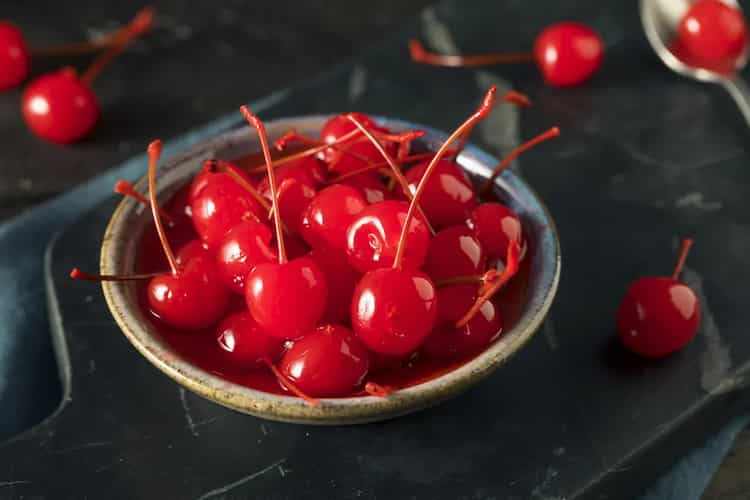Those who look forward to cocktails know that part of the fun is the edible garnish. Among twists of lemon peel, olives, mint, and slices of passionfruit and strawberry, maraschino cherries definitely take the cake.
Maraschino cherries go all the way back to 1905, when sweetened liqueur was used to preserve Marasca cherries. These were the brainchild of the Luxardo distillery in Croatia. The sweetened liqueur used for preserving the cherries was distilled from a mixture of cherries, pits, leaves and stems that had been fermented and was called “maraschino.” And so, cherries doused with it came to be called the same. Fresh cherries blackened and spoiled easily, whereas those bathed in maraschino had a longer shelf life and travelled well. By the late 1800s, they had reached the US and with their ability to charm drinkers, soon began to be used by bartenders.
It was pricey to import European maraschino cherries and so Americans began to explore inexpensive variations. Marasca cherries weren’t easy to find, so “Royal Ann” cherries were used. Methods of preservation that didn’t involve soaking the cherries in alcohol were experimented with. It was found that a sodium metabisulphite solution worked, but synthetic coal-tar dyes needed to be added to keep the colour intact and benzaldehyde was used to elevate the taste. Benzaldehyde gives maraschino cherries their characteristic almond-like flavour.

This version of maraschino cherries looked and tasted very different from the original, but was still used in drinks and to top ice cream. They slowly became more a candy than fruit. However, these cherries presented a problem: they had a tendency to become pulpy with time. A food critic predicted that they would disappear, but the cherries remained. Their continued use can be attributed to the work of Professor Ernest Wiegand at the Oregon Agricultural College, which is now Oregon State University. Farmers in the state grew a lot of Royal Ann cherries and so his work, which focused on maintaining the firm texture of the cherries, was prized. Even today, the university conducts a course based on the maraschino cherry.
“Preserved in a chemical brine, sweetened with corn syrup and then tarted up with near-fluorescent red dye, it is the culinary equivalent of an embalmed corpse,” wrote Toby Cecchini in a New York Times article in 2005. The writer meant to poke fun at the artificiality and lack of nutritional value of maraschino cherries. Despite this, they have managed to stand their ground and appear in whiskey cocktails like the Manhattan and Old Fashioned. After all, they do add a whole other dimension to regular drinks.


